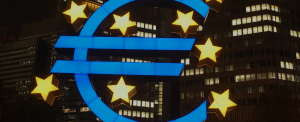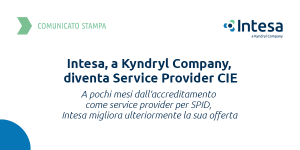Self Sovereign Identity: The Future of Digital Identities
Giving users back full control over their identity thanks to blockchain
Self Sovereign Identity is a digital identity model that restores full control over a person’s identity to the person who created it, as well as the information they wish to share. SSI includes any number of data, and the SSI market is set to expand exponentially over the next four years.
Imagine this scenario: you are about to buy a train ticket, and you want to use a senior citizen. Customer service asks for an ID. Your ID certainly shows you meet the age criteria, but you have now disclosed your name, your exact age, and where you live. None of which they needed!
This scenario takes place each and every day in the digital realm: we disclose our data and information to service providers, generating any number of “digital identities” over which we have little or no control. The most recent developments in terms of digital identity have aimed to bring that control back to the user who created them, thanks to the Self Sovereign Identity model.

What is Self Sovereign Identity and How it Works
To be “sovereign” over our identity, to be able to control and to choose which our our personal data to share, and with whom: Self Sovereign Identity is an ideal model for digital identity. The underlying rationale (simplistic only at first blush) is that identity must always be under the exclusive control of the individual it represents, and they may in turn utilize it at their discretion, with no intermediary required.
How does the Self Sovereign Identity work? SSI was born out of a need for both “direct” identification between a user and a service provider (I create an account on a website to be able to use your service), as well as for “3-corner” identification (I use the account from one service to sign up for a separate service).
The Self Sovereign Identity is instead based on the Decentralized Identity paradigm: it is the user who has a single identity, to which a series of attributes called “claims” are linked by other entities, known as “issuers” which are always then subject to verification by the “verifier.” To put it simply, each digital ID has a series of personal claims: a university might attribute “degree held” to the graduate’s digital identity, who may also have within their “wallet” the attribution of “Milan resident” associated with them by the Municipality of Milan.
Even more fascinating is how blockchain is used in the SSI model. Blockchain, to wit, in addition to making each claim verifiable and fixed, grants the identity-holder the option of presenting the claims individually, and subjecting them to verification. To return to the train-ticket example: with SSI, we would’ve been able to demonstrate (and the customer-service agent to verify) the requisite age for the discount without having to disclose the rest of our information.
SSI: Advantages and Potential Applications
A single identity to access an array of services. Thanks to the SSI model we can use our unambiguous “wallet” to access our banks, personal accounts, public services, all without having to memorize a series of credentials. From there, the potential ripple effects of the SSI model multiply in all directions. Just think of the possibilities within the digital-banking or e-voting arenas, not to mention what we might have been able to accomplish during the Covid-19 lockdown to replace hard-copy self-certifications.
How much of this is now available in the real world? A lot more than you think. In fact, in June of 2020 a pilot project was launched regarding digital identity, onboarding, know your customer, and blockchain. The project was spearheaded by CeTIF, Università Cattolica, Intesa (IBM Group) and CherryChain, and the goal was to share user information among participants within a certain ecosystem to facilitate onboarding and know-your-customer procedures.
A market slated for growth
No wonder, then that the SSI market is estimated by Juniper Research to skyrocket from the 100 million forecasted for 2020 to 1.1 billion dollars in sales by 2024.* According to research, most of these sales will come from companies providing services tied to digital identity.
In fact, thanks to Self Sovereign Identity, a new era for security and data protection, not to mention privacy, lies ahead. Full control of our identities and our information will be restored to us, the individuals. That goes for the digital sphere as well.
Source: Self Sovereign Identity: By 2024, a 1.1 billion-dollar industry, Blockchain4Innovation



